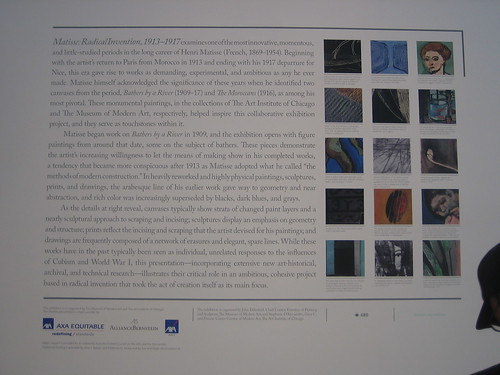
My next stop during my recent New York trip, after Guggenheim Museum, Frick Collection, and Morgan Library & Museum was The Museum of Modern Art (MOMA). The main attraction during the time was the special exhibit: Matisse: Radical Invention, 1913–1917, which runs from July 18 to October 11, 2010. MOMA sits informed us thus:
In the time between Henri Matisse's (1869–1954) return from Morocco in 1913 and his departure for Nice in 1917, the artist produced some of the most demanding, experimental, and enigmatic works of his career—paintings that are abstracted and rigorously purged of descriptive detail, geometric and sharply composed, and dominated by shades of black and gray. Works from this period have typically been treated as unrelated to one another, as an aberration within the artist's development, or as a response to Cubism or World War I. Matisse: Radical Invention, 1913–1917 moves beyond the surface of these paintings to examine their physical production and the essential context of Matisse's studio practice. Through this shift of focus, the exhibition reveals deep connections among these works and demonstrates their critical role in the artist's development at this time.
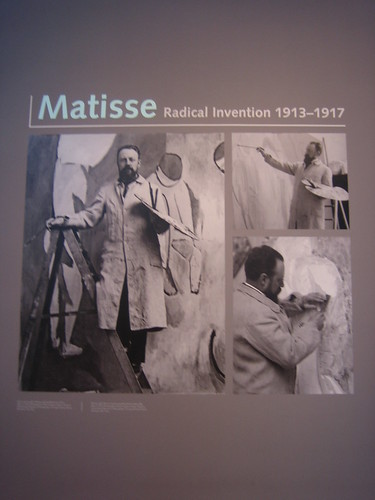
This exhibit was very insightful and thought-provoking. Besides, the canvases presently here are almost universally beautiful, not flashy, but in a haunting and muted way. I actually prefer this period of Matisse to his later ones, when the vibrancy of colors became more predominant and he was more interested in presenting intricate patterns of fabrics or backgrounds, such as Large Seated Nude (1925-29) and Woman with a Veil (winter-spring 1927) shown below. Here, the simplicity and understated ecstasy of discovery was just palpable.
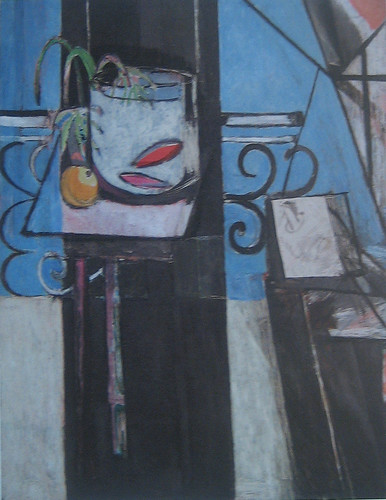
Goldfish and Palette, late November 1914-spring 1915

Gourds, summer-fall 1916
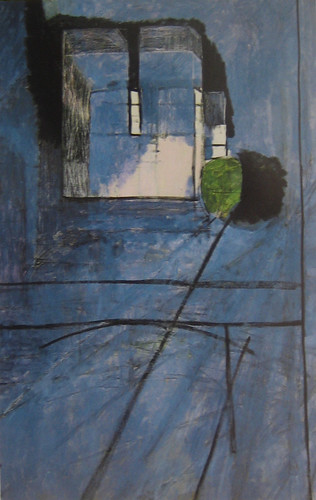
View of Notre-Dame, 1914

Piano Lesson, 1916
These above four pieces share same quietness, as if time stood still and we were in a bliss of eternity. They were also in turns, somber, playful and mysterious. But none of them exceed the fantastic Portrait of Yvonne Landsberg below, whose sitter was present with lines of glowing personal bubbles, as if she was one of the most alluring plant you might find in a Bosch's better mood paintings. I particularly love the economical dashes of orange in her face and the pale teal ribbons to her left. Bold and delicate painting!

Portrait of Yvonne Landsberg, 1914
This exhibit's final piece was a presentation of the journey Matisse made, through the digital examination of a large canvas below, Bathers by a River, which he worked on during the periods of 1909-10, 1913, 1916-17. New York Times had an in-depth analysis of this piece which included the timeline.
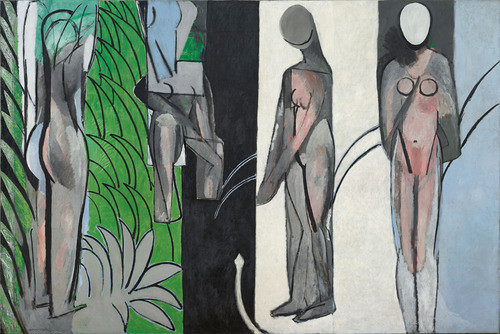
Bathers by a River, 1909-10, 1913, 1916-17
This painting started in the similar style to his iconic painting Dance (I) done in early 1909 and his sketch Music dated spring-summer 1907. Linear outlines of wonderful poses contains flat planes of bodies. I was able to see these two pieces later that day amongst MOMA's regular collections. They were evidences of his artistic achievement. Yet, Matisse did not stop developing and he, though didn't like the pure abstraction, didn't not shy away from that path altogether and his effort culminated in the finished Bathers by a River, with its curious balance between representation and abstraction. It perhaps was not as immediate as Dance (I) but was no less beautiful. The contrast between dark and light color patches, the bold postures and symbols, the cold yet delicate colors made it a marvel.
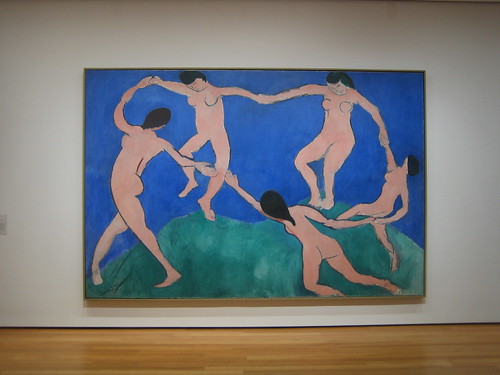
Dance (I), early 1909
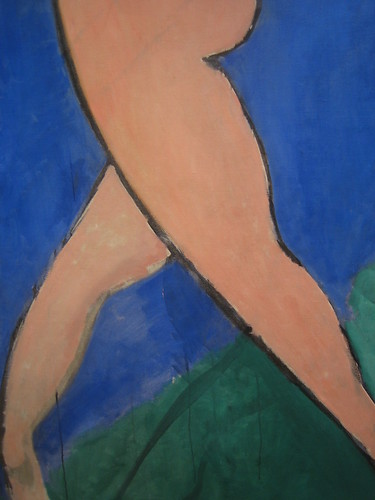
Dance (I) (details), early 1909
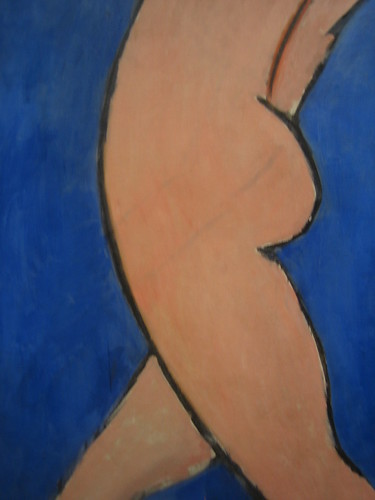
Dance (I) (details), early 1909
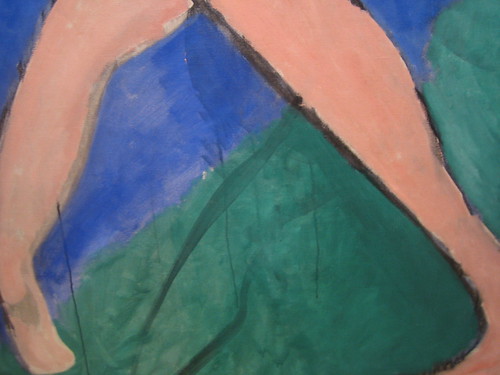
Dance (I) (details), early 1909

Music (Sketch), spring-summer 1907
Below two paintings, viewed in MOMA's permanent collections, represented the later style of Matisse. It was fascinating to study them after the special exhibit.
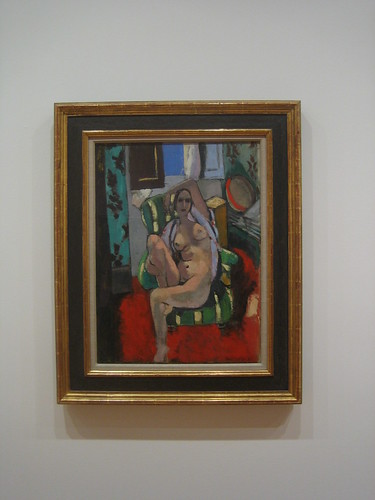
Large Seated Nude, 1925-29
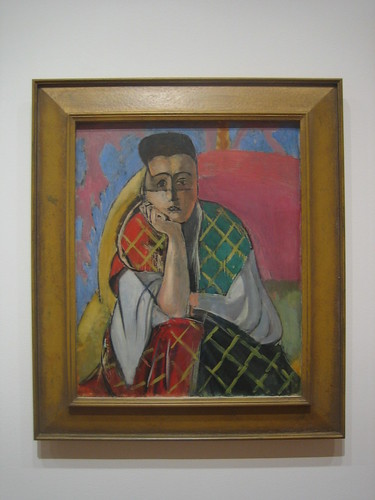
Woman with a Veil, winter-spring 1927
>> New York City Report, September 2010, Part VII: The Museum of Modern Art, New York City << New York City Report, September 2010, Part V: Morgan Library and Museum in New York City





No comments:
Post a Comment